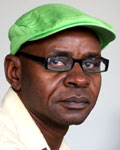
Top stories

RetailDiageo sells East African Breweries stake to Asahi for $2.3bn
Duncan Miriri and Emma Rumney 2 days


"There is yet no country worldwide planning the switch-off of their analogue radio services in the near future, even though some are starting to make digital radio mandatory, such as France," Johannes von Weyssenhoff, of Broadcast and Installation Engineering (B&I) and Digital Radio Mondiale, said this week, speaking at the Africa Media and Broadcasting 2010 Congress at the Sandton Convention Centre in Johannesburg, South Africa.
"I understand that a couple of digital radio trials have taken place in some countries, just trials nothing concrete, but to say that they have already switched to digital radio is misleading," he pointed out.
Digital radio will be a revolution in Africa, making it easy for community radio, especially rural communities as well as remote urban communities living outside the coverage of urban coverage, as there will be no limitations as to where one can listen to it, unlike FM, he said.
"The challenge, however, will be to fill all these channels with content - channels that will be made available with digitisation."
Explaining the difference between low and high radio frequencies, Weyssenhoff said: "While low frequencies (below 30 MHz) can be used to cover large areas or very huge distances, they are however extremely susceptible to disturbances and interferences.
"This vulnerability more or less increases with the distance, but there are many other factors involved, such as night-day, summer-winter shifting, fading and weather conditions. "Nowadays the popularity of low frequencies for radio broadcast has lost because of the unacceptable sound quality caused by interferences and the low bandwidth."
Regarding high frequencies (above 30 MHz), he said: "Propagation is direct and can therefore not be disturbed by atmospheric interferences. However, very sporadic and unlikely reflections are possible under very special constellations. The range of high frequencies is limited to approximately 100km (VHF, UHF), and 25km (L-band) at plane level, and reduces dramatically in mountains or hilly environment.
"Through interferences analogue coverage with the same programme requires a network using different frequencies. However, a network using only one frequency can be established if digital transmission technology is used. In this way, he said, exhausted frequency capacities can be re-utilised easily (digital dividend)."
Weyssenhoff urged radio stations aspiring to switch to digital radio to use the following latest technologies: DAB+, DRM+ (ETSI, year 2009), FMextra (the quick solution), and DMB (multimedia broadcasting, digital handheld-sized multimedia, with the ability of hosting TV and picture radio services).
Other technologies include DVB-H (handheld with radio capabilities, also facilitating radio services to be received with compliant mobile phone) and DVB-T (terrestrial TV with radio capabilities, digital SD-HD TV platform with the ability of hosting radio services, digital SD-HD TV platform with the ability of hosting radio services.
In addition, he recommeded DVB-T2, saying it is an advanced terrestrial TV technology with radio capabilities, and radio services can be received with DVB-T2 STB without additional equipment.
"There is an enormous added value and return on investment for operators that opt for digital radio," Weyssenhoff admitted.
"The employment of new technologies is attractive for broadcasting companies because it can attain a fast return on financial investments, such as rent of transmission resources, fees income - business-to-business (advertisement) and business-to-customers (subscribers), cost reduction caused by lower power consumption, optimisation of transmitter networks by using efficient standards and coverage.
"And also participation even on business to customers' hardware business (receivers), merchandising, and income by value-added digital services."
